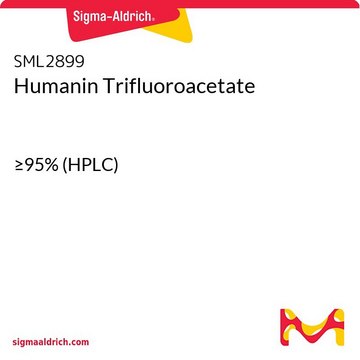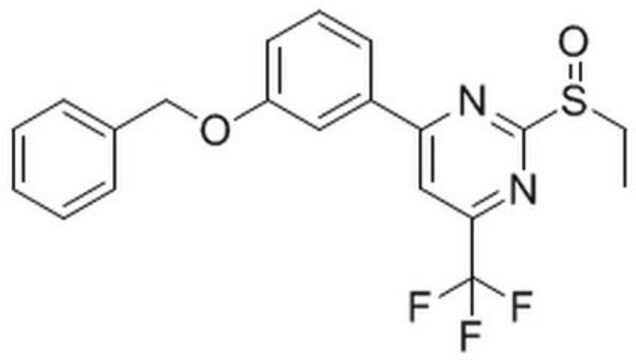SML2836
Lixisenatide
≥95% (HPLC)
Synonim(y):
(Des-Pro38)-Exendin-4-(Lys)6 amide, AVE0010, HGEGTFTSDLSKQMEEEAVRLFIEWLKNGGPSSGAPPSKKKKKK-NH2, His-Gly-Glu-Gly-Thr-Phe-Thr-Ser-Asp-Leu-Ser-Lys-Gln-Met-Glu-Glu-Glu-Ala-Val-Arg-Leu-Phe-Ile-Glu-Trp-Leu-Lys-Asn-Gly-Gly-Pro-Ser-Ser-Gly-Ala-Pro-Pro-Ser-Lys-Lys-Lys-Lys-Lys-Lys-NH2, ZP10, ZP10A
About This Item
Polecane produkty
Poziom jakości
Próba
≥95% (HPLC)
Postać
lyophilized powder
kolor
white to beige
temp. przechowywania
−20°C
Działania biochem./fizjol.
Kod klasy składowania
11 - Combustible Solids
Klasa zagrożenia wodnego (WGK)
WGK 3
Temperatura zapłonu (°F)
Not applicable
Temperatura zapłonu (°C)
Not applicable
Certyfikaty analizy (CoA)
Poszukaj Certyfikaty analizy (CoA), wpisując numer partii/serii produktów. Numery serii i partii można znaleźć na etykiecie produktu po słowach „seria” lub „partia”.
Masz już ten produkt?
Dokumenty związane z niedawno zakupionymi produktami zostały zamieszczone w Bibliotece dokumentów.
Nasz zespół naukowców ma doświadczenie we wszystkich obszarach badań, w tym w naukach przyrodniczych, materiałoznawstwie, syntezie chemicznej, chromatografii, analityce i wielu innych dziedzinach.
Skontaktuj się z zespołem ds. pomocy technicznej



![[Gly14]-Humanin G human ≥95% (HPLC), powder](/deepweb/assets/sigmaaldrich/product/images/189/227/ff2ad0c9-ee19-4c3d-990e-92bd3eb9e672/640/ff2ad0c9-ee19-4c3d-990e-92bd3eb9e672.jpg)


